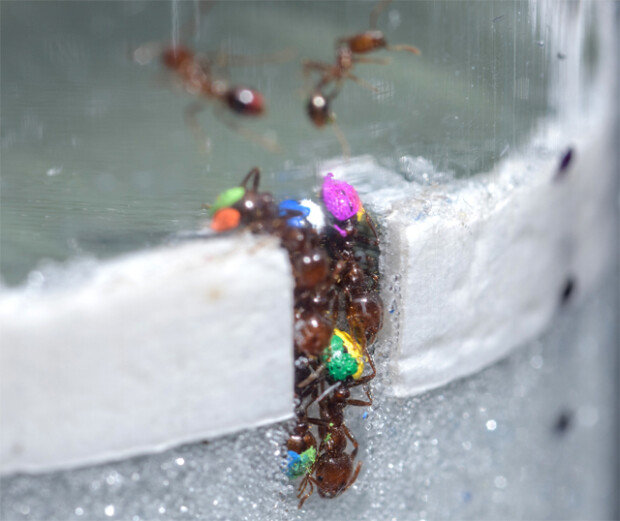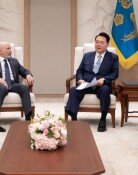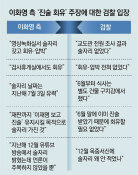Research: Ants teach us effective tricks for maneuvering in environments
Research: Ants teach us effective tricks for maneuvering in environments
Posted August. 17, 2018 07:36,
Updated August. 17, 2018 07:36

A research team led by Professor Daniel Goldman of the Georgia Institute of Technology School of Physics put 30 red ants in a jar filled with glass beads similar to mud and observed for two days on how they dug underground tunnels.
Each ant dug out the beads and went frequently in and out of the holes several hundred times. But more than two thirds of the ants hardly worked at all, with about 30 percent of the ants doing the majority (70 percent) of the digging work. Some 22-31 percent of ants remained idle and did not go underground at all. Most of the ants that did enter the tunnels did not dig the beads and simply returned to ground. With the exception of ants that worked in shifts or in movement, the number of ants that actually worked underground increasingly declined, with only seven to 10 percent found to be working.
The fact that the majority of a group remains idle might appear inefficient, but the research team used mathematic models to confirm that this was actually more efficient. Researcher Jeffrey Aguilar of Mechanical Engineering at Georgia Tech, the first author of the thesis, wrote in an e-mail interview that “the lesson of ants teaches us that it is advisable to avoid situations where there are too many people in a limited space. Under such situations, unequal work allocation, where a concentrated few work while the rest remain idle, yields the optimal results.”
The research team discovered that 30 percent of the tasked ants were not working because they were competent. When the team removed five ants that worked the hardest, a few other ants took their place. The number of ants had reduced, but the work efficiently remained unchanged. It did not matter who performed the work, or how efficiently the work was done, to the overall efficiency. A leader that allocated the work was not necessary at all. It was decided at the moment who would work, according to the circumstances.
The team did not conduct the research out of pure amusement. Rather, they assumed that they would apply the principle in robots powered by artificial intelligence working in disaster scenes, such as earthquakes or collapses.
ashilla@donga.com







